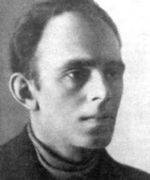 Born in January, 1891, in Warsaw, Poland, Osip Emilievich Mandelstam was raised in the imperial capital of St. Petersburg, Russia. His father was a prominent leather merchant and his mother a teacher of music. Mandelstam attended the renowned Tenishev School and later studied at the Sorbonne, the University of Heidelberg, and the University of St. Petersburg, though he left off his studies to pursue writing. He published his first collection, Kamen, or Stone (1913), when Russian Symbolism was the dominant persuasion. Like Mayakovsky and Khlebnikov, who cleared the ground for Russian Futurism, Mandelstam departed from this old mode of expression in favor of a more direct treatment of thoughts, feelings, and observations under the aegis of Acmeism, a programme that included Nikolay Gumilev and Anna Akhmatova.
Born in January, 1891, in Warsaw, Poland, Osip Emilievich Mandelstam was raised in the imperial capital of St. Petersburg, Russia. His father was a prominent leather merchant and his mother a teacher of music. Mandelstam attended the renowned Tenishev School and later studied at the Sorbonne, the University of Heidelberg, and the University of St. Petersburg, though he left off his studies to pursue writing. He published his first collection, Kamen, or Stone (1913), when Russian Symbolism was the dominant persuasion. Like Mayakovsky and Khlebnikov, who cleared the ground for Russian Futurism, Mandelstam departed from this old mode of expression in favor of a more direct treatment of thoughts, feelings, and observations under the aegis of Acmeism, a programme that included Nikolay Gumilev and Anna Akhmatova.
His second book, Tristia (1922), secured his reputation, and both it and Stone were released a year later in new editions. Though his reputation was secured, the Bolsheviks had begun to exert an ever-increasing amount of control over Russian artists, and Mandelstam, though he had initially supported the Revolution, was absolutely unwilling to yield to the political doctrine of a regime that had executed Gumilev in 1921. The poet published three more books in 1928- Poems, a collection of criticism entitled On Poetry, and The Egyptian Stamp, a book of prose – as the state closed in on him. Mandelstam spent his later years in exile, serving sentences for counter-revolutionary activities in various work camps, until his death on December 27, 1938, in the Gulag Archipelago.

